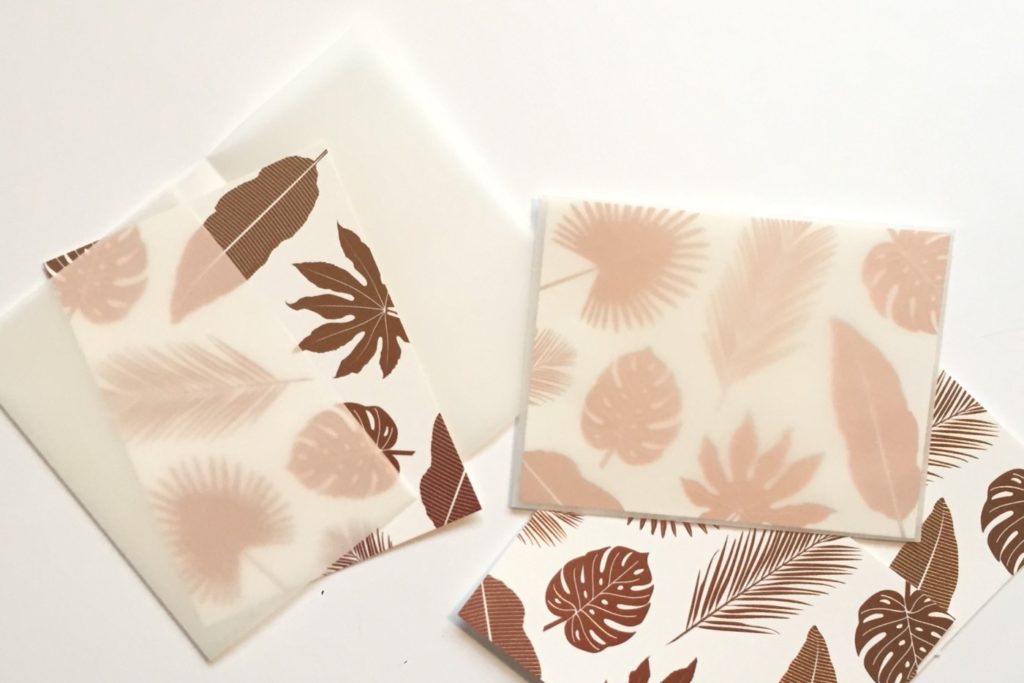Translucent papers are a favorite among the graphic design and stationery community. With all of the characteristics of fine printing papers, translucent papers as their name implies, offer a subtle transparency to print design. Often used as fly-sheets, wraps and envelopes, translucent papers are a great way to help your message stand out. However, when used in the wrong application, they can pose some issues. Understanding how translucent papers are made, and what type of application to use them in, can make all the difference in executing a successful production run.
Translucent paper, often referred to in the design community as vellum (not to be confused with the paper finish vellum) is simply opaque paper that has been transparentized, either naturally (during the paper making process) or chemically (offline).
NATURAL VS. CHEMICAL
Naturally translucent papers are made the same way as an opaque white sheet, but undergo a more rigorous process during the pulping phase to achieve their “natural” transparency. Due to the way they are manufactured, naturally translucent papers retain inherent paper characteristics, however they tend to be a bit duller in whiteness than chemically translucent papers. They lend themselves well to folding and scoring, and are a good choice for applications like envelopes wraps and bellybands. Some examples of naturally translucent papers are CLEARFOLD Translucent Papers. Reich CT, and Glama Natural Translucent Papers.
Chemically translucent papers achieve their translucency through an off-machine process. In this case, the sheets are first manufactured as opaque papers and coated with petroleum-based resins. They’re then heated and cured to achieve translucency. Due to the resins, the process results in brittle fibers and yields the paper unrecyclable. Chemically translucent papers tend to be whiter and brighter in appearance than naturally translucent papers. They provide excellent printability and stability on press. Some examples of chemically translucent papers are UV/ULTRA II Translucent Papers and Curious Collection Translucents.
TRANSLUCENT PAPERS & PRINTING
Translucent papers offer designers a wide range of options when it comes to print design. Creatives can choose from a wide selection of colored translucent papers in a range of basis weights, with the majority in the writing weight category.
Both types of translucent papers usually require fully oxidizing inks, and time to acclimate to temperature changes. And when cutting, it is advised to use a dull blade as a newly sharpened blade can chip.
Additionally, as advances in digital print technology continues to evolve so does the offering in papers, with many offering translucent papers for digital production technologies including HP Indigo, laser, toner and offset printing.
As with any print project, it’s always a good idea to request samples ahead of time to see if the paper is suited for your specific application. We offer an extensive range of translucent papers, with many in-stock in our warehouses. If you’d like to see samples of our translucent papers, just ask your Millcraft rep or contact one of Design & Solution Centers.

